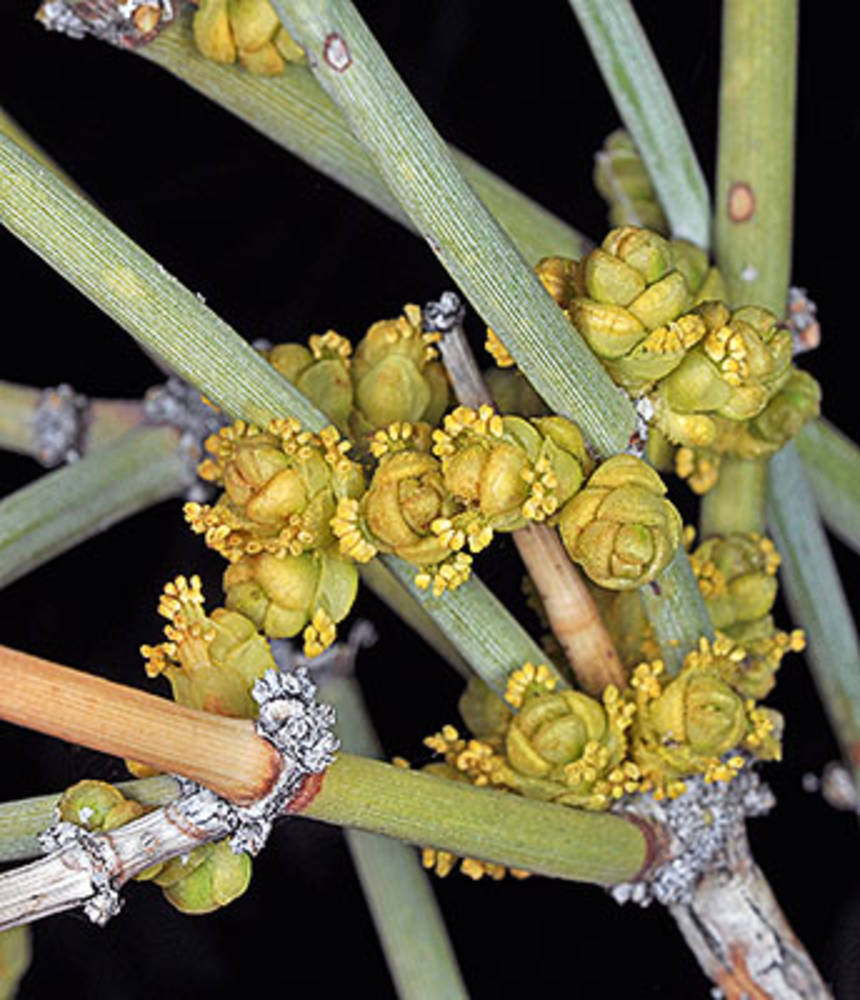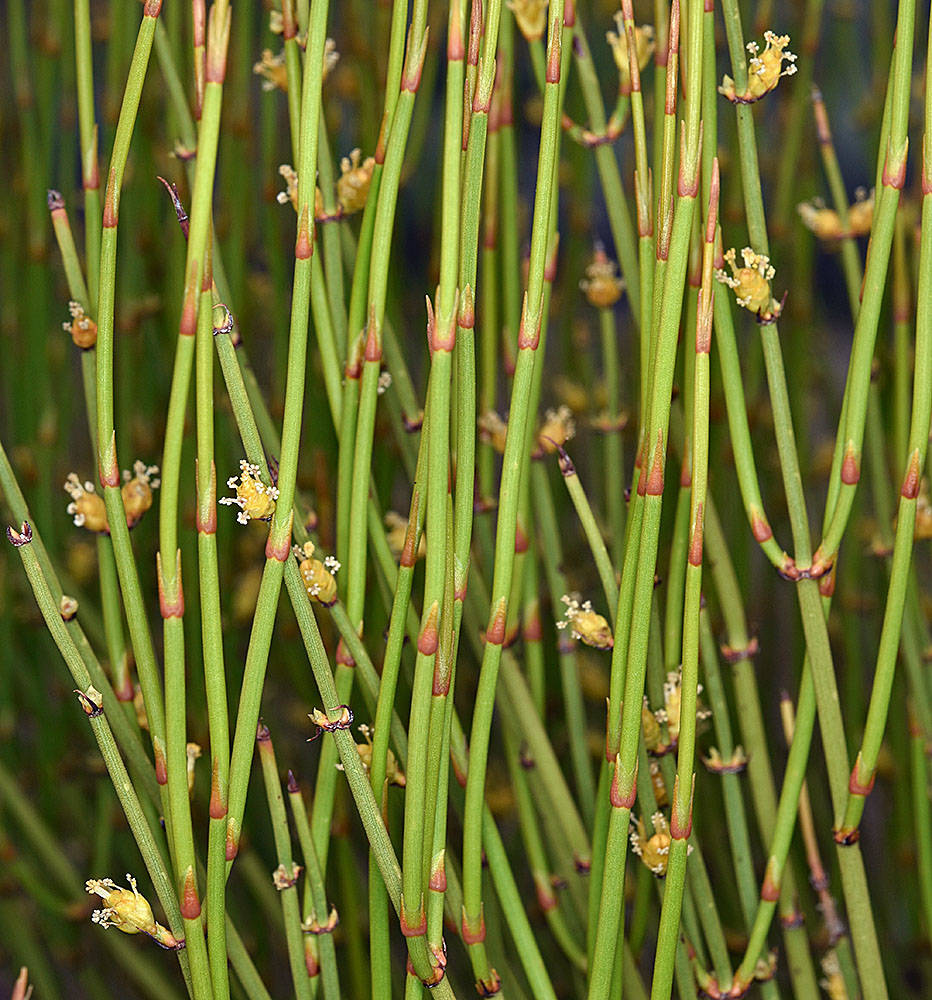Ephedra nevadensis
Ephedra viridis
Nevada ephedra
green ephedra, green Mormon tea
alternate or whorled, angle of divergence about 45°;
twigs pale green to bluish green, fading to gray, glaucous when young.
alternate or whorled, angle of divergence about 30°;
twigs bright green to yellowish green, fading to yellow.
conic;
apex obtuse.
conic;
apex obtuse.
opposite, rarely in whorls of 3, 2–6 mm long, deciduous;
leaf bases gray.
opposite, 2–5 mm long, persistent;
leaf bases brown to black.
1–5 per node, ellipsoid, 4–8 mm.
2–6 per node; ovoid, 5–7 mm.
1–2, globose to ellipsoid, 6–9 mm; smooth.
2, ellipsoid, 5–8 mm; smooth.
1–several per node, globose, 5–10 mm;
bracts opposite, 3–5 pairs, circular;
margins entire, brown to green center.
2–several per node; ovoid, 6–10 mm;
bracts opposite, 6–10 pairs; ovate;
margins entire, yellow center.
=28.
=14, 28.
Ephedra nevadensis
Ephedra viridis
Dry, rocky slopes and sandy flats. 0–1900 m. BR. CA, NV; southeast to AZ. Native.
Typically coning in late winter to early spring, Ephedra nevadensis is most easily distinguished from our only other Ephedra species, E. viridis, by the bluish green color of its twigs.
Dry, rocky slopes, canyons, and sagebrush scrub. 900–1900 m. BR, Lava. CA, NV; east to CO, southeast to NM. Native.
Ephedra viridis typically cones in spring and is easily distinguished by its yellowish green twigs.
Stephen Meyers
Stephen Meyers





